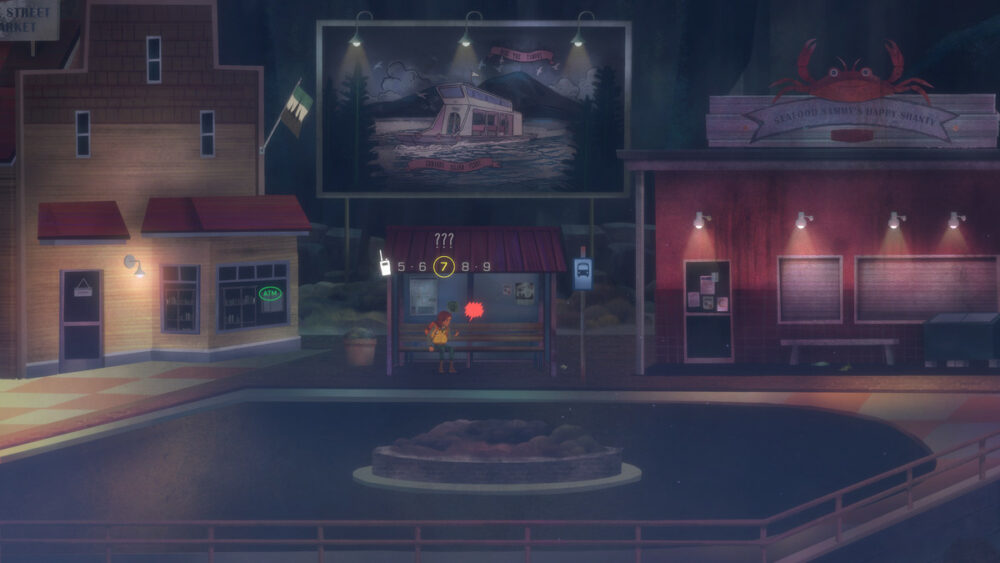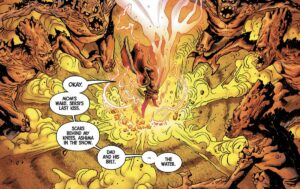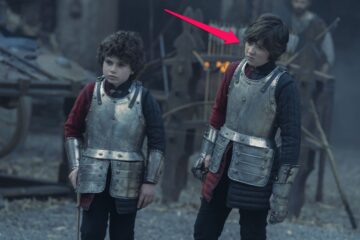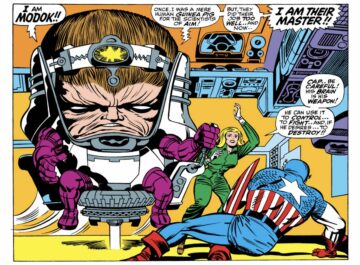Riley wakes up on a bus stop in her hometown of Camena, eyes flicked open from the surprise of walkie-talkie static, a chilling hiss that’s now a calling card for developer Night School Studio.
Riley is a new hire to a team of environmental researchers interested in radio waves; her job is to set up the beacons used to catch the right signals. (Better get used to that static!) Riley is a military dropout who’s returned to her hometown right at the precipice of major change. She’s paired up with a former high school acquaintance, Jacob, to put up several of these beacons over the course of a few days. Naturally, that’s before the first beacon goes haywire and connects to a static portal above Edwards Island, a gateway to a techno-ghostly world that the two don’t yet know is being summoned by a group of teenagers (separate from the bunch from Oxenfree). Like its predecessor, Oxenfree 2: Lost Signals revolves around walking and tuning a radio to the supernatural world, but now there’s also a decent amount of climbing and a walkie-talkie. In Oxenfree 2, the radio and walkie-talkie are storytelling devices that add layers to the world you immediately see on screen, where the two main characters are already wrapped up in an otherworldly plot.
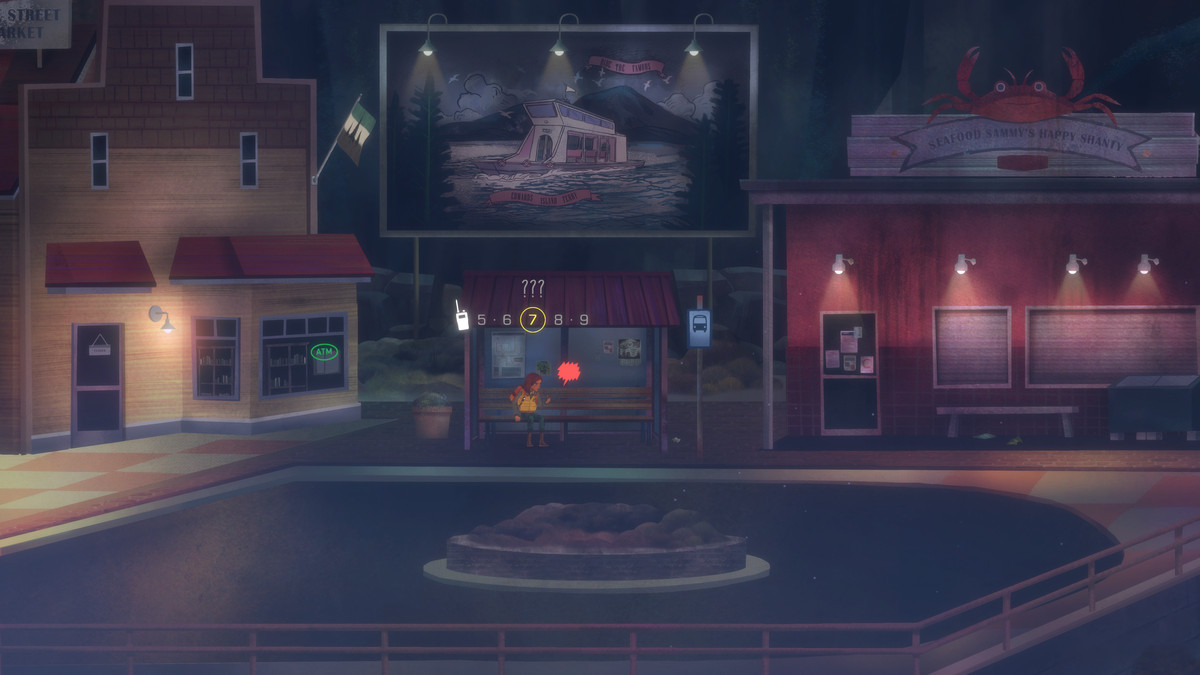
Oxenfree 2 builds upon the scaffolding the first game provided: It upgrades the rich, detailed environments, weaves in a town’s worth of new characters, and continues to nail the increasingly creepy atmosphere of a world in which ghosts hang out in static and radio waves. There are pieces of Oxenfree 2 that made me question the static in the air around me; they formed a compulsion to keep looking over my shoulder for something amiss. But often, in other moments, I felt pulled out of that engagement by a story that felt too familiar, both by a forced connectedness between the two main characters and an unraveling narrative where the mysteries mostly fell flat. Despite everything fresh and compelling in Oxenfree 2, and how often it effectively builds on the strengths of its predecessor, Oxenfree fails to push far enough away from the original; so many of its mysteries are empty, like errant signals on a shortwave radio.
Oxenfree 2 once again features time travel, but this time, it’s deployed as a means to solving puzzles. When Riley opens a rift using the radio, she and Jacob are able to step back into Camena’s past. One example: In a mining cave with a broken elevator, the duo can use a rift to go back to a time before the elevator crashed, and use it to bridge a gap. Once across, Riley and Jacob can step back through the rift and back to the present, left with the mindfuck of whether they, after all, were the cause of the crash. It’s these moments of unanswered questions, paired with the creepy, chopped-up audio the ghosts use to communicate — remember the iconic “Is. Leave. Possible?” from the first game? — that leave the lasting chill of a good horror story.
Oxenfree 2’s narrative branches mean that you’re able to shape Riley’s personality a bit, while also altering the story with what you choose to say or not say. But this is where the comparison to Oxenfree hinders Oxenfree 2’s success; the writing in the original was rightfully lauded for how it captured the spirit of teenagers. It was a mature drama with the light moodiness of high school problems, but it also dug deeper into the teenage psyche to touch on grief, change, and relationships. Night School has once again captured a realistic pattern of speech in its dialogue, with great voice acting, too — but Oxenfree 2’s main characters don’t have the same appeal as their forebears, and in a game like this, characters are everything.
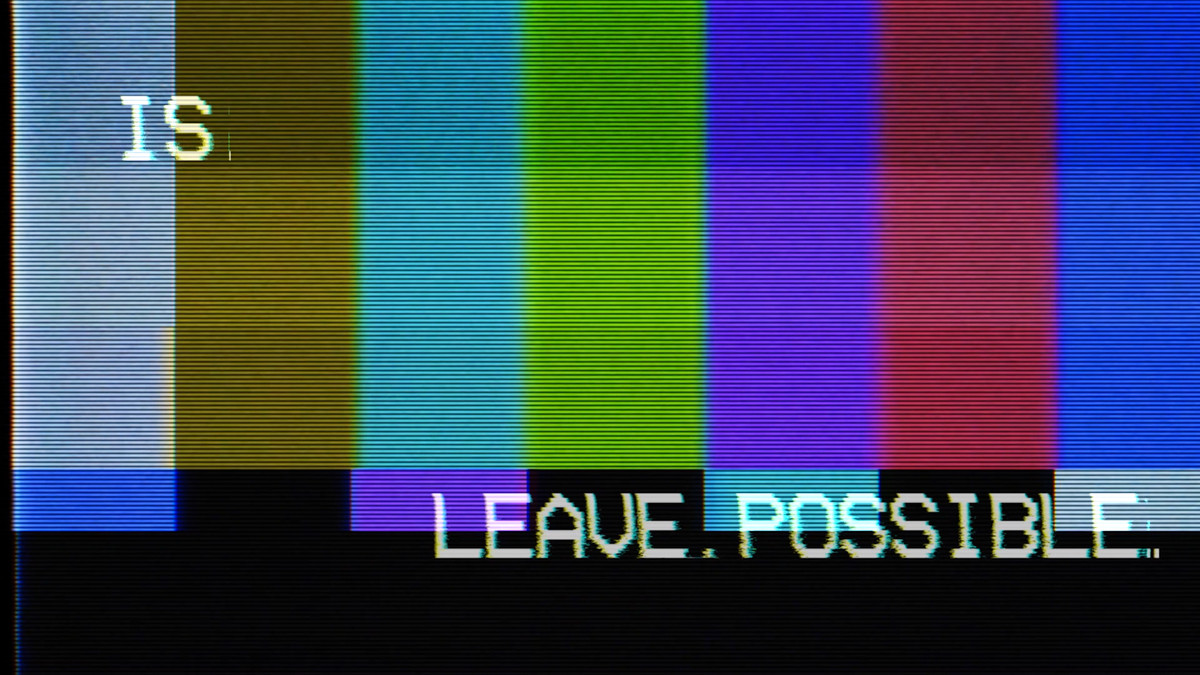
Because Oxenfree 2 is less of a mystery on the paranormal level — it’s the same phenomena as the first game — a lot of the weight falls on Riley and Jacob, two characters that aren’t captivating enough to carry the load. Their own stories unravel, somehow, both too quickly and too slowly; after hours of character-building dialogue that I couldn’t connect to, I was frequently caught off guard with a major development that came out of nowhere. This could, perhaps, be the result of Oxenfree 2’s nonlinear world; the main premise of the game is to set up four beacons, but save the first one, you can do them in any order. Likewise, because of the nature of the branching dialogue system, my choices could have been what stunted the narrative during my first playthrough.
I do find myself more interested in these characters on my second playthrough, which I haven’t yet finished. After spending roughly eight hours with Riley and Jacob in the first playthrough, I am invested in their journeys purely in a “quality time” sense; I’ve engrossed myself in their stories, so how could I not eventually become attached? Still, were I not playing the game for this review, I may not have given it a second go, and I wouldn’t have arrived at the appreciation I’m feeling now.
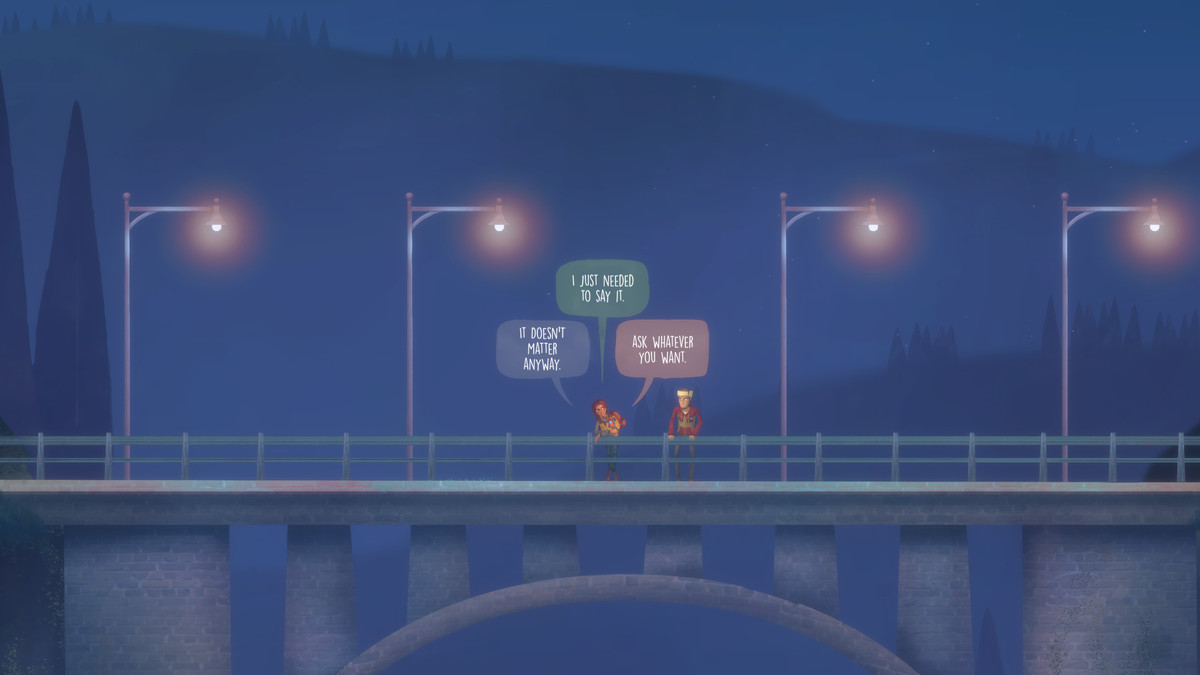
Ironically, Oxenfree 2’s best moments involve its ancillary characters — one in particular who is literally never seen on screen. Maria is a high school radio host who’s manning Camena’s late-night broadcast. She’s easy to miss if you don’t make certain narrative choices, namely listening to her show and calling into her advice line. She’s an earnest buffer to the sometimes insufferable Jacob, and Night School once again lets its teenage characters, especially its teenage girls, exist in a way that’s unfortunately still rare in modern art. Maria speaks with the flighty tone of a teenager, sometimes applying a gravitas to otherwise inconsequential teenage problems, like dramatic teenagers do, while also having the space for emotional depth in musings about her friends and life in Camena. Beyond that, she’s also an essential connection between Riley, Jacob, and the three teenagers opening back up the Edwards Island rift. Without her, the teens feel like mere antagonist archetypes. It’s a shame that I only found Maria on my second playthrough — the depth she lends these three other characters is essential to the story, and I find myself more interested in the story of what led these kids to this particular point.
In the end, I loved the idea of Oxenfree 2 more than the game itself. It’s a game that has the right pieces, but falls short of putting them together in a way that lives up to the innovative, classic experience of the original game. A more compelling story is frustratingly hidden within the game’s branching narrative system, and it’s a shame that some people will miss it.
Oxenfree 2: Lost Signals will be released on July 12 on Nintendo Switch, PlayStation 4, PlayStation 5, Windows PC, and mobile via Netflix. The game was reviewed on Steam Deck using a pre-release download code provided by Netflix. Vox Media has affiliate partnerships. These do not influence editorial content, though Vox Media may earn commissions for products purchased via affiliate links. You can find additional information about Polygon’s ethics policy here.
- SEO Powered Content & PR Distribution. Get Amplified Today.
- PlatoData.Network Vertical Generative Ai. Empower Yourself. Access Here.
- PlatoAiStream. Web3 Intelligence. Knowledge Amplified. Access Here.
- PlatoESG. Automotive / EVs, Carbon, CleanTech, Energy, Environment, Solar, Waste Management. Access Here.
- BlockOffsets. Modernizing Environmental Offset Ownership. Access Here.
- Source: https://www.polygon.com/reviews/23791491/oxenfree-2-lost-signals-review-release-date
- 1
- 12
- 220
- 28
- 7
- 8
- 9
- a
- able
- About
- above
- across
- acting
- add
- advice
- Affiliate
- after
- again
- All
- already
- also
- am
- amount
- an
- and
- any
- appeal
- applying
- appreciation
- ARE
- around
- Art
- as
- At
- Atmosphere
- audio
- away
- back
- bars
- BE
- beacon
- because
- become
- been
- before
- being
- BEST
- Better
- between
- beyond
- Bit
- both
- branches
- BRIDGE
- broadcast
- broken
- buffer
- builds
- Bunch
- bus
- but
- by
- calling
- came
- CAN
- captivating
- captured
- card
- carry
- Catch
- caught
- Cause
- Cave
- certain
- change
- character
- characters
- choices
- choose
- Classic
- Climbing
- code
- commissions
- communicate
- comparison
- compelling
- compelling story
- connect
- connection
- connects
- content
- continues
- could
- course
- Crash
- crashed
- days
- deeper
- deployed
- depth
- despite
- detailed
- Developer
- Development
- Devices
- dialogue
- do
- download
- Drama
- dramatic
- During
- Earn
- easy
- Editorial
- effectively
- Emotional
- end
- engagement
- enough
- environmental
- environments
- especially
- essential
- ethics
- eventually
- everything
- Example
- exist
- experience
- eyes
- fails
- familiar
- far
- Features
- feel
- few
- find
- First
- For
- forced
- Former
- four
- frequently
- fresh
- Friends
- from
- game
- Gaming
- gap
- gateway
- Get
- given
- go
- goes
- good
- great
- Group
- guard
- has
- Have
- having
- her
- hidden
- High
- hinders
- hire
- Horror
- HOST
- hours
- How
- http
- HTTPS
- i
- iconic
- idea
- if
- immediately
- in
- increasingly
- influence
- information
- innovative
- interested
- into
- invested
- involve
- Is
- Island
- IT
- ITS
- itself
- Job
- July
- keep
- kids
- know
- lasting
- layers
- leave
- Led
- left
- less
- Level
- Life
- light
- lightning
- like
- Line
- links
- Listening
- lives
- load
- looking
- lost
- lot
- loved
- made
- main
- major
- make
- many
- maria
- May
- me
- mean
- means
- Media
- mere
- Message
- Military
- Mining
- Mobile
- Modern
- moments
- more
- mostly
- my
- Mystery
- namely
- narrative
- nature
- Near
- Netflix
- never
- New
- Newsletter
- Night
- night school studio
- Nintendo
- Nintendo Switch
- not
- notes
- now
- of
- off
- often
- on
- once
- One
- only
- open
- opening
- opens
- or
- order
- original
- Other
- otherwise
- out
- over
- own
- oxenfree
- particular
- partnerships
- Past
- Patch
- patch notes
- Pattern
- PC
- People
- perhaps
- Personality
- pieces
- plato
- plato data intelligence
- platodata
- platogaming
- Playing
- playstation
- playstation 4
- playstation 5
- Point
- policy
- Polygon
- Portal
- possible
- precipice
- present
- problems
- Products
- provided
- purchased
- purely
- push
- put
- putting
- question
- questions
- quickly
- Radio
- Rare
- realistic
- Relationships
- released
- Remember
- researchers
- result
- review
- revolves
- rich
- rift
- right
- roughly
- roundup
- same
- save
- say
- School
- Screen
- second
- see
- seen
- sense
- separate
- set
- several
- shape
- she
- Short
- show
- shown
- sign
- signals
- sits
- small
- So
- Solving
- some
- something
- Space
- Spending
- spirit
- Steam
- Steam Deck
- step
- still
- stop
- Stories
- Story
- storytelling
- strengths
- studio
- success
- supernatural
- surprise
- Switch
- system
- Team
- Teenage
- teenager
- teenagers
- Teens
- television
- text
- than
- that
- The
- The Game
- the world
- their
- Them
- there
- These
- they
- things
- this
- though
- three
- Through
- time
- time travel
- to
- together
- too
- touch
- travel
- Twice
- two
- unfortunately
- unravel
- up
- upgrades
- upon
- use
- used
- using
- via
- Voice
- voice acting
- W3
- walking
- was
- waves
- way
- weekly
- were
- What
- when
- where
- whether
- while
- WHO
- will
- windows
- Windows PC
- with
- within
- without
- world
- worth
- wrapped
- writing
- XML
- yet
- you
- zephyrnet
